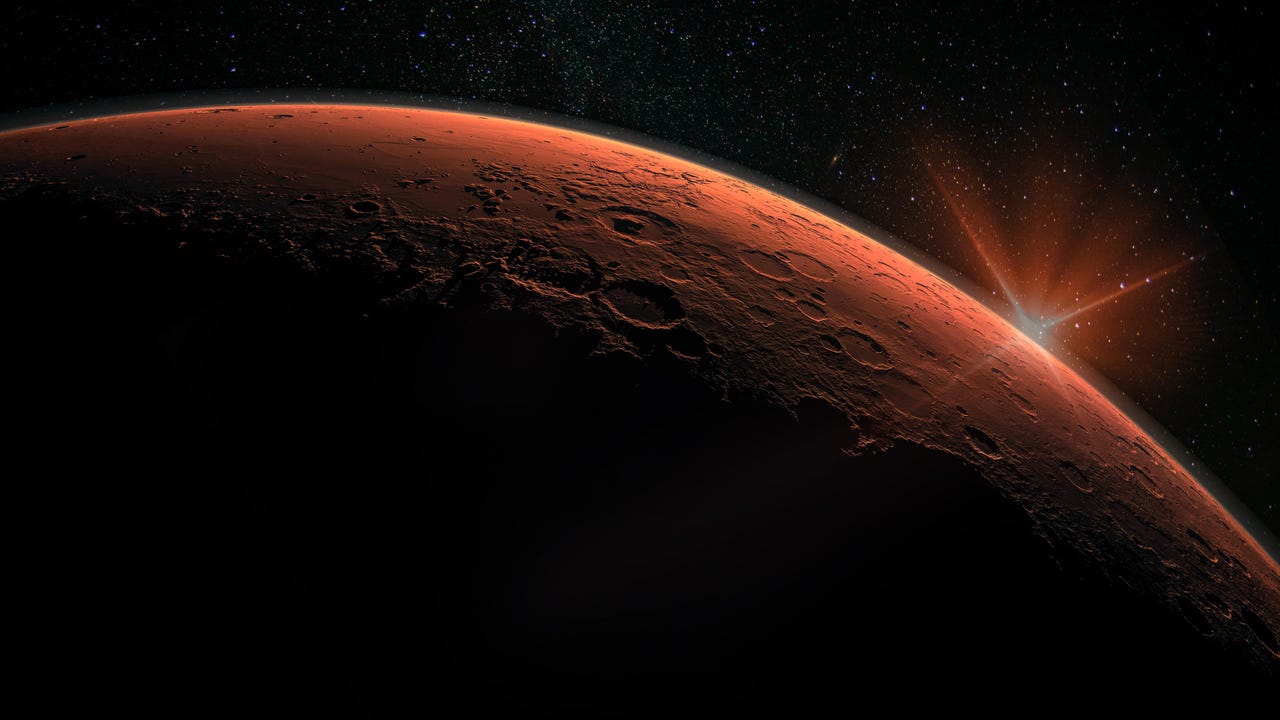































 Shutterstock
Shutterstock NASA and European space agency ESA have plotted a path for bringing Mars samples back to Earth.
The two agencies have agreed how the first samples from Mars' Jezero Crater will be returned to Earth, bearing treasures extracted by NASA's Perseverance Mars rover since it landed in February 2021.
The samples will be carried back to Earth in the Mars Sample Return campaign at some point within the next decade, likely in 2033.
ESA and NASA will create a sample tube depot on Mars at the "Three Forks" area near the base of the crater's river delta.
Also:NASA kicks off UFO study with 16-member team
In September, Perseverance acquired sedimentary rock samples from the bed of the once-flowing ancient river. NASA is searching for evidence for former microbial life that might have existed 3.5 billion years ago. Previously, it has also acquired igneous rock formed by magma or volcanic activity.
This cache will contain samples that can help scientists explain the Jezero Crater's history and how Mars evolved. If they're lucky, it could also provide evidence of signs of ancient life.
"Scientists believe the cored samples from the delta's fine-grained sedimentary rocks -deposited in a lake billions of years ago -are the mostly likely to contain indicators of whether microbial life existed when Mars' climate was much different than what it is today," NASA said.
The testing currently underway aims to ensure the test tubes are robust enough to handle accidental drops and robotic handling of them. NASA JPL engineers are testing what's the optimal crushable material for crashing a vehicle back to Earth in a way that protects the payload.
"Never before has a scientifically curated collection of samples from another planet been collected and placed for return to Earth," said Thomas Zurbuchen, a NASA associate administrator for science.
"NASA and ESA have reviewed the proposed site and the Mars samples that will be deployed for this cache as soon as next month. When that first tube is positioned on the surface, it will be a historic moment in space exploration."
A specific date for the return has yet to be set but it should happen in 2033 according to the outcome of a meeting between ESA, NASA and an independent board in July. The rover has collected 14 samples with rock cores and Martian air. Perseverance will drop 10 sample tubes at Three Forks, according to ESA.
ESA is providing the campaign with a 2.5 meter robotic Sample Transfer Arm that will pick up the tubes and transfer them to a rocket that will launch into Mars' orbit. There are also two backup helicopters available in the event that Perseverance can't reach ESA's robotic arm in 2030.
 Etiquetas calientes:
innovación
Espacio espacio
Etiquetas calientes:
innovación
Espacio espacio